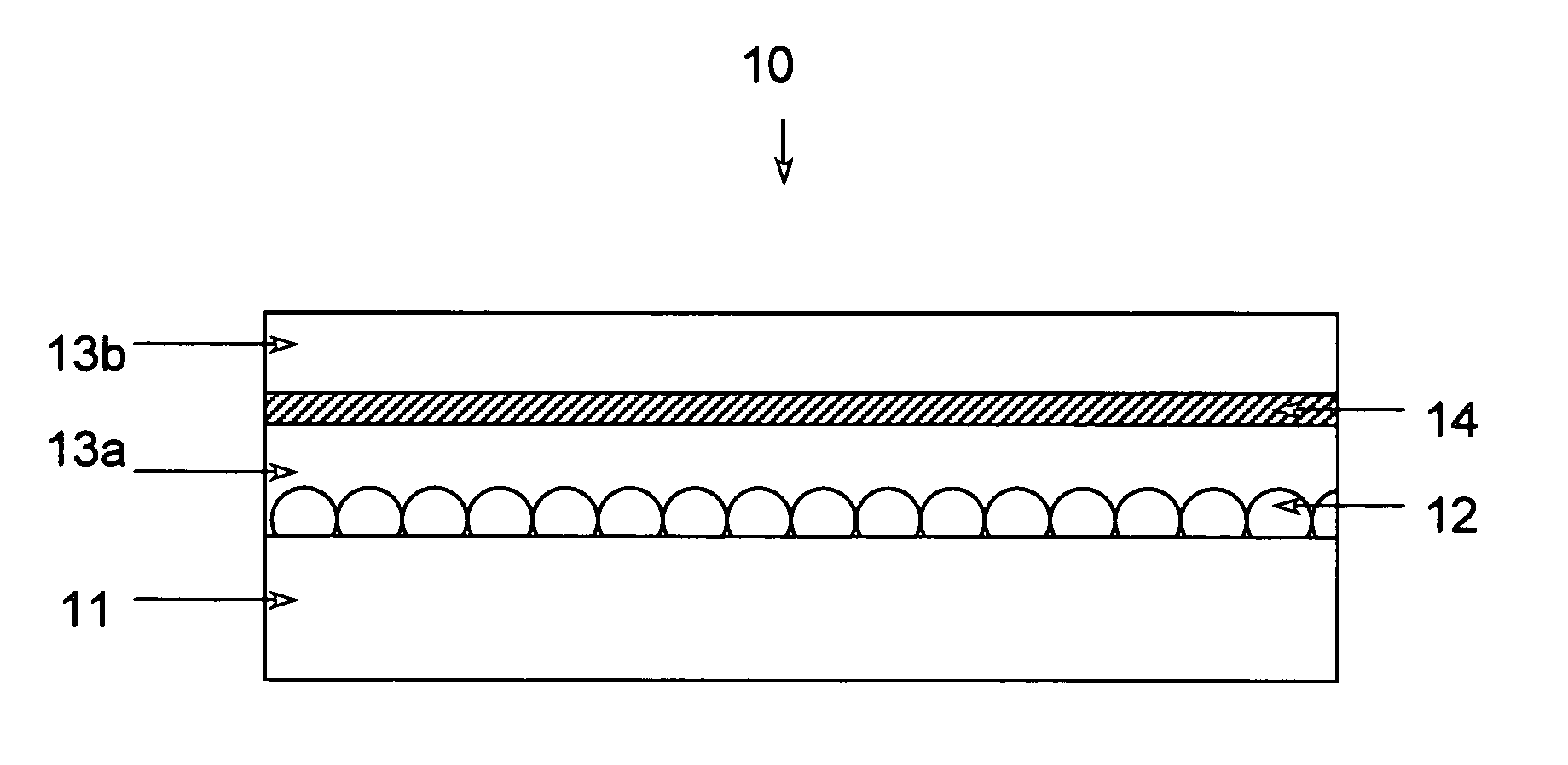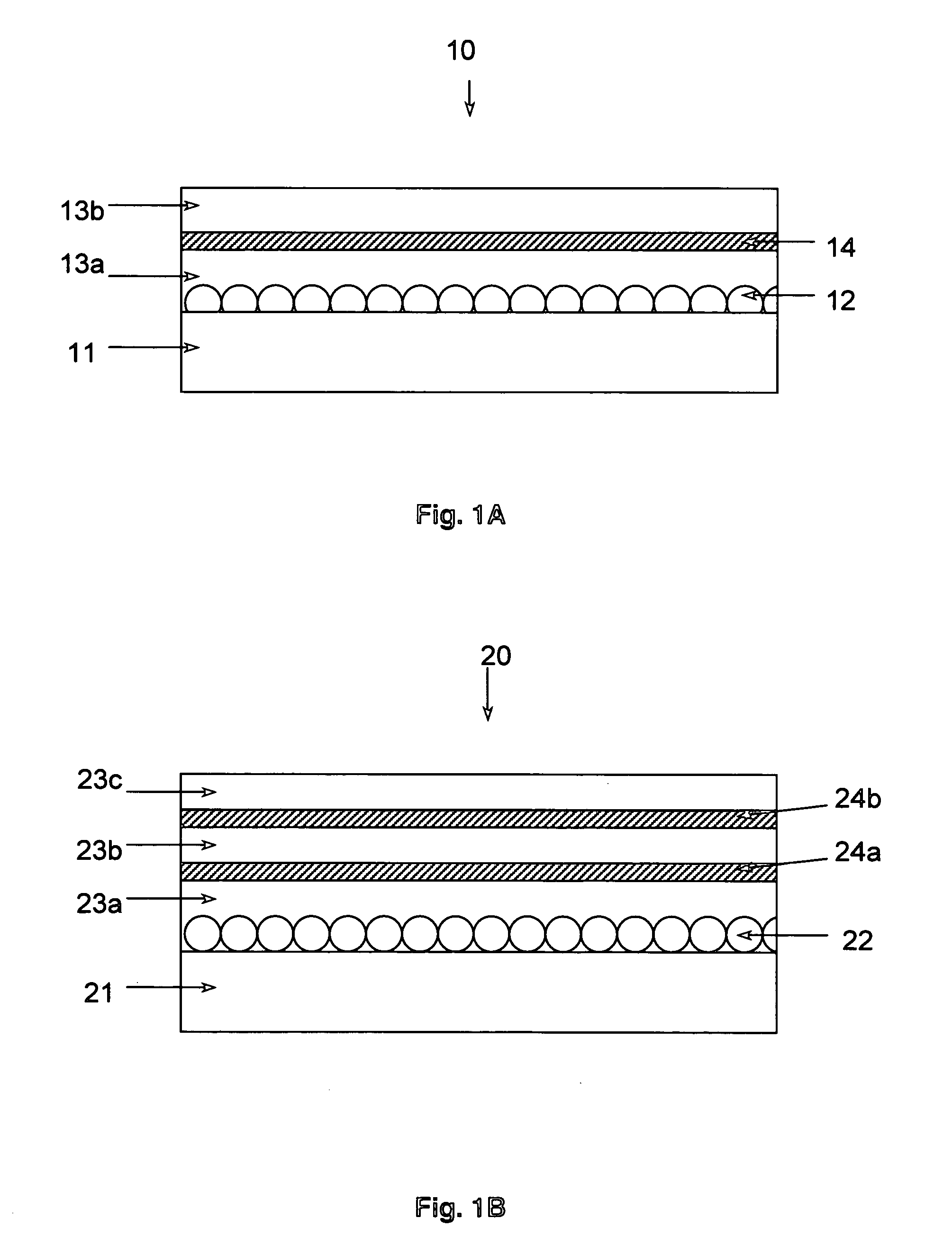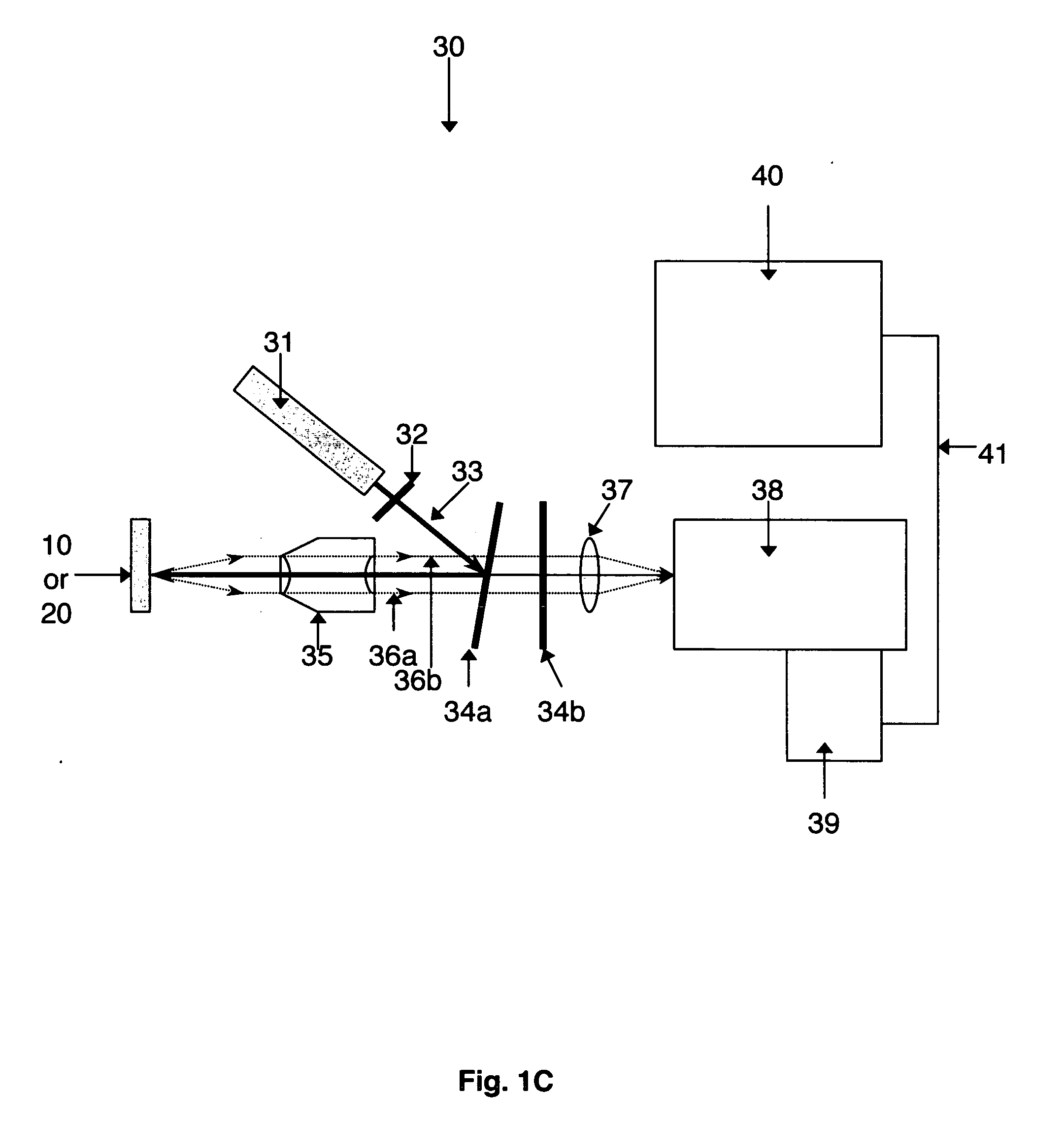Multilayered surface-enhanced Raman scattering substrates
a raman scattering and multi-layer technology, applied in the field of raman spectroscopy and spectroscopic imaging, can solve the problems of sers analyses performed using these metal colloidal substrates that demonstrate poor stability, and change the morphological as well as chemical properties of the substra
- Summary
- Abstract
- Description
- Claims
- Application Information
AI Technical Summary
Benefits of technology
Problems solved by technology
Method used
Image
Examples
example 1
Chemicals
[0050] Benzoic acid (Sigma), p-aminobenzoic acid (Sigma), terephthalic acid (Aldrich), brilliant cresyl blue (Sigma) and ethanol (Aldrich) were all used as received. Agglomerate-free alumina (Type CR15) was purchased from Baikowski International Corporation (Charlotte, N.C.). Silver particles were purchased from Kurt J. Lesker Company (Clairton, Pa.) with 99.99% purity.
example 2
Preparation of SERS Substrates
[0051] Glass microscope slides (VWR Scientific) used for SERS substrate supports were cut into rectangular strips (2.5 cm×1 cm) and cleaned with diluted nitric acid, distilled water and ethanol, as described previously (31) followed by air drying. Once the glass supports were cleaned, three drops of a 5% w / v suspension of 100 nm diameter alumina particles in distilled water were placed on the glass slide, covering the entire surface with alumina (32). The alumina-coated glass slide was then placed on a spin coater and spun for 5 seconds at 2500 rpm to uniformly spread the alumina particles over the slide surface. Following coating of the slide with alumina nanoparticles, a continuous layer of silver film was thermally evaporated on the slides to prepare traditional SFON substrates.
[0052] Dual-FON and Multi-FON substrates used in these studies were fabricated in a similar fashion to the SFON substrates. First, SFON substrates were created and exposed ...
example 3
Thermal Vacuum Evaporation System
[0053] Silver film deposition was performed using a vacuum evaporation system (Denton Vacuum; Model ExplorerTM-14). The alumina-coated glass slides were first placed in a homemade sample holder and mounted on a rotating disk 15 cm above the tungsten boat (R. D. Mathis company) containing 99.99% pure silver shot. During evaporation, the alumina coated substrates were rotated constantly to ensure an even coating of the silver film. A chamber pressure of approximately 3×10−g Torr was achieved prior to silver deposition and the deposition rate was controlled at approximately 1.8 nm / s. The thickness was monitored using an Inficon XTM / 2 quartz crystal film thickness monitor mounted beside the sample holder.
PUM
| Property | Measurement | Unit |
|---|---|---|
| diameter | aaaaa | aaaaa |
| thickness | aaaaa | aaaaa |
| total thickness | aaaaa | aaaaa |
Abstract
Description
Claims
Application Information
 Login to View More
Login to View More - R&D
- Intellectual Property
- Life Sciences
- Materials
- Tech Scout
- Unparalleled Data Quality
- Higher Quality Content
- 60% Fewer Hallucinations
Browse by: Latest US Patents, China's latest patents, Technical Efficacy Thesaurus, Application Domain, Technology Topic, Popular Technical Reports.
© 2025 PatSnap. All rights reserved.Legal|Privacy policy|Modern Slavery Act Transparency Statement|Sitemap|About US| Contact US: help@patsnap.com



